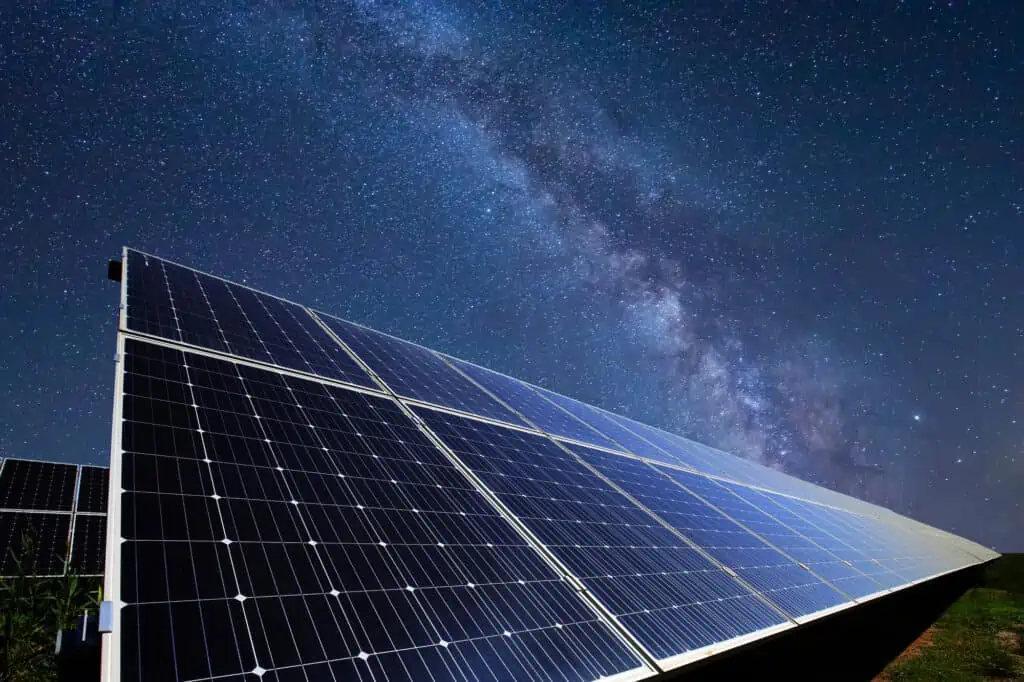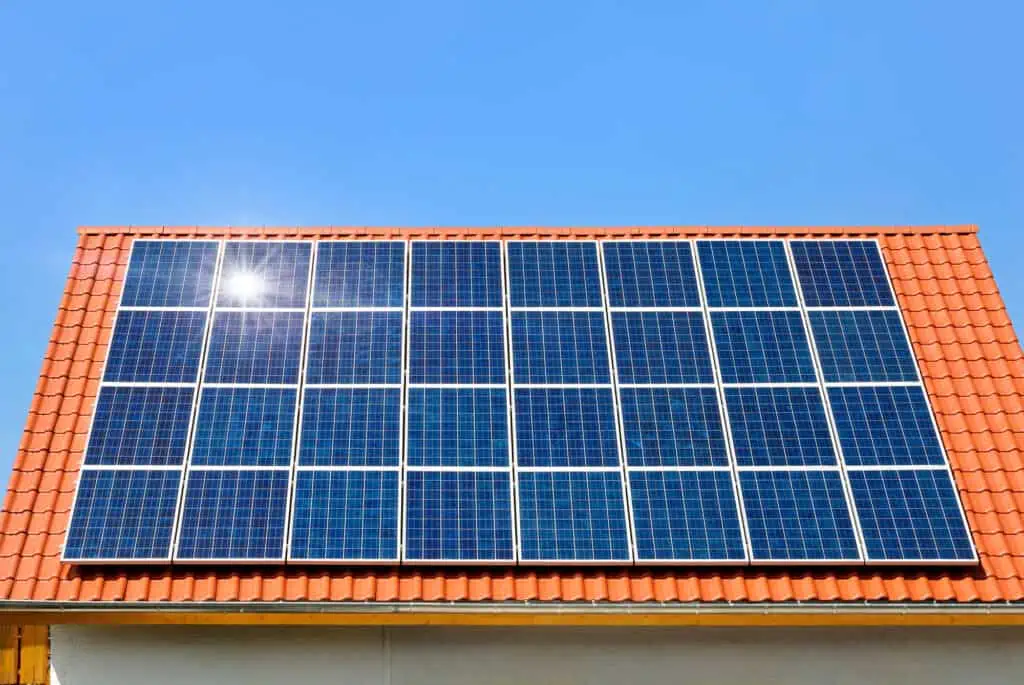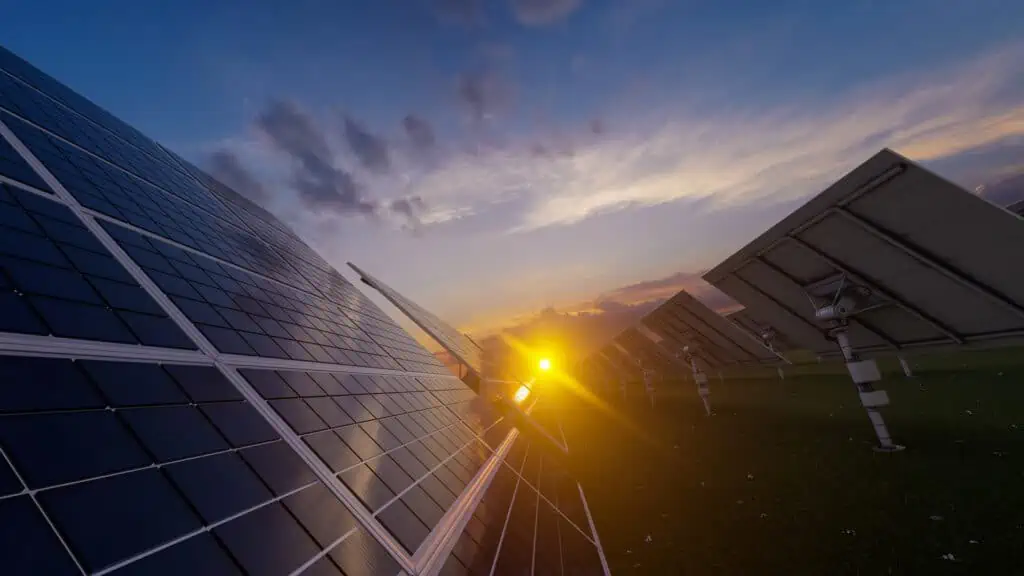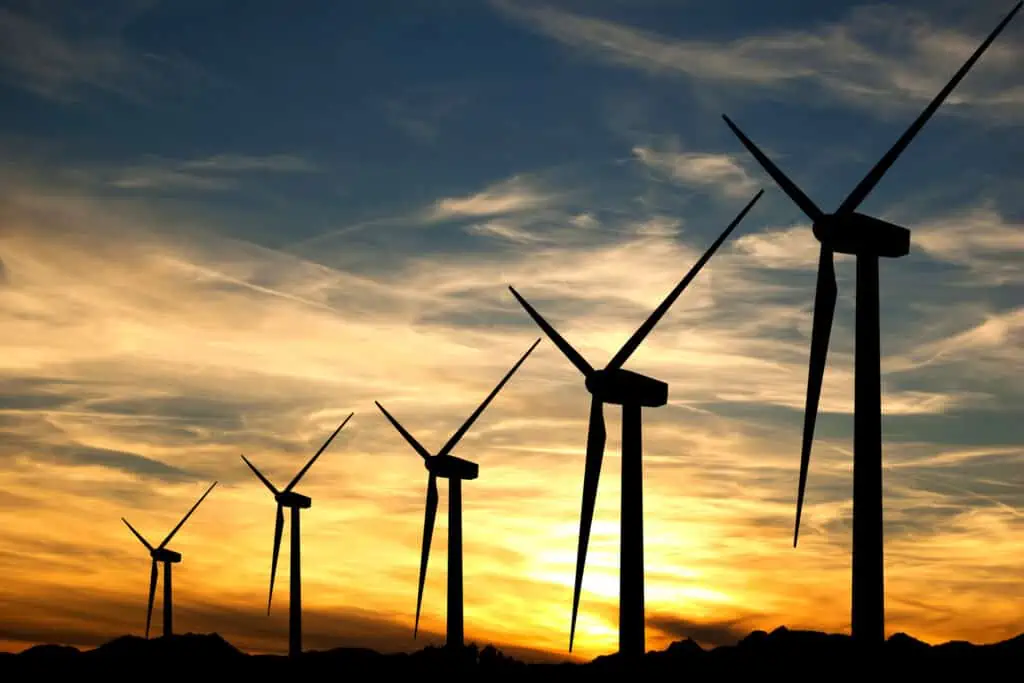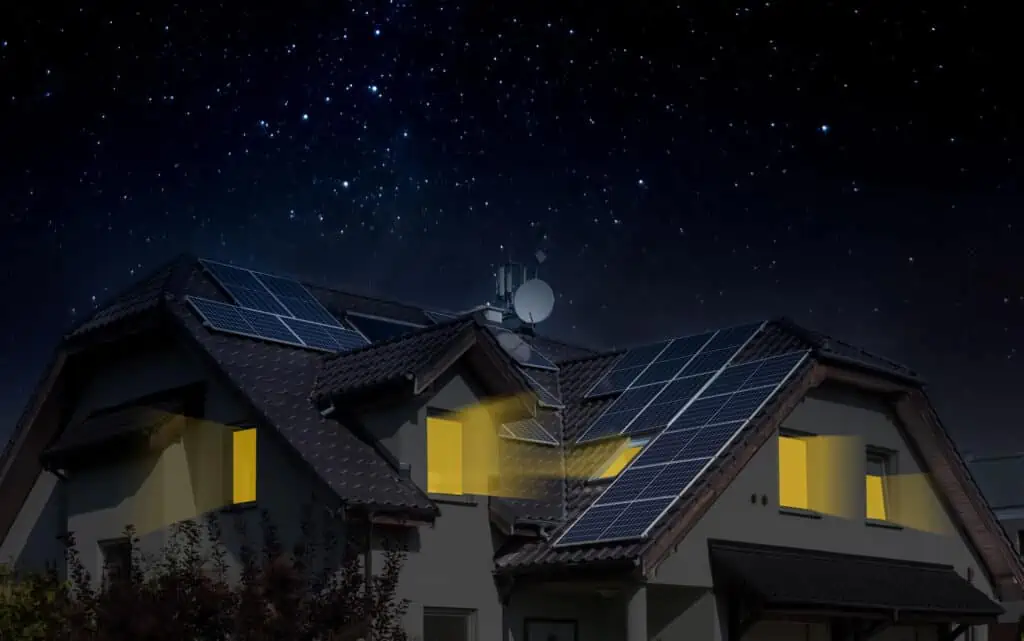Have you ever wondered if solar panels can still generate electricity at night?
It’s a common misconception that solar panels only work when the sun is shining during the day. But the science behind it is more complex than that.
Let’s explore how solar panels work and answer whether they can charge at night. We will also discuss other alternative sources of energy at nighttime.
So, if you want to learn more about solar energy, keep reading!
Contents
- 1 Understanding How Solar Panels Generate Electricity
- 2 The Role of Sunlight in Solar Panel Energy Production
- 3 Solar Panels: Do They Charge After the Sun Sets?
- 4 Can Solar Panel Systems Store Energy for Nighttime Use?
- 5 Alternatives to Solar Panels for Nighttime Energy Needs
- 6 Using Solar Panels at Night
Understanding How Solar Panels Generate Electricity
To determine if solar panels can charge at night, we must first understand how they produce electricity.
Solar panels generate electricity by converting sunlight into energy. This process is achieved through the use of photovoltaic cells, which are the basic building blocks of these panels.
The PV cells are made up of layers of silicon, a semiconductor material abundant in the Earth’s crust.
When sunlight hits a panel, it causes the electrons in the solar cells to become excited and start moving.
These excited electrons are captured by an electrical circuit. Then, the circuit channels the energy into a battery or the electrical grid.
The Role of Sunlight in Solar Panel Energy Production
The role of sunlight is crucial in the energy production of solar panels. To put it simply, the more sunlight that hits the panels, the more energy they will produce.
This is why solar panels are installed in areas with high levels of sunlight. These include rooftops and open fields.
Doing so ensures maximum energy production for homes or businesses.
Factors That Affect Solar Panel Efficiency
Here are some factors that affect the efficiency of solar panels.
- Weather and location. Panels in an area with long, sunny days will generate more electricity than those with short, cloudy days.
- Type of panels. Monocrystalline panels provide the most efficiency. Polycrystalline panels are less efficient, but they are cheaper. Finally, thin-film panels are the least efficient, but they are also the most affordable.
- Angle and orientation. Panels tilted toward the sun will receive more sunlight than those that are flat or tilted away.
- Shading. Even a small amount of shading can significantly reduce the amount of energy your panels can produce.
What Happens to Solar Panels on Cloudy Days or During Storms?
While solar panels do work best in direct sunlight, they can still generate electricity on cloudy days or during storms.
Cloudy days can reduce the amount of sunlight that reaches the panels. This, in turn, reduces the amount of electricity generated.
But the panels can still convert some of the available light into electricity, allowing them to continue producing power.
During storms, the panels may be temporarily covered by snow or debris. This can also reduce their efficiency. But once the storm passes and the panels are clear, they can resume generating electricity.
Solar Panels: Do They Charge After the Sun Sets?
So, given all these, let’s go back to our main question of whether solar panels charge at night.
The answer is no. Solar panels cannot charge at night.
Sunlight is the key ingredient in the energy production of these panels. Without sunlight, solar panels cannot generate electricity.
But what about the moon and other light sources? Can’t they give power to solar panels?
Technically, the moon’s light is reflected from the sun. So, in a sense, it can give power to the panels.
But the amount of light would not be enough to power a home. The same goes for other light sources like lamp posts or street lights.
Can Solar Panel Systems Store Energy for Nighttime Use?
While it’s true that solar panels cannot charge at night, there are ways to store solar energy for nighttime use. Here are some ways you can do so.
Solar Battery Storage
Solar batteries are used to store excess energy generated by solar panels during the day. The main goal for this is so you can use the power at night or during times of high energy demand.
There are two main types of solar batteries available, both with their advantages and disadvantages.
- Lead-acid batteries: These are the most common type of solar battery. But they are heavy, bulky, and have a limited lifespan.
- Lithium-ion batteries: These are newer technology that offers higher energy density, longer lifespan, and faster charging times. But they are also more expensive.
Most solar batteries can power a home for several hours a night. But some larger and more advanced batteries can provide power for up to several days.
Net Metering
Another way to store solar energy is through a process called net metering. This involves connecting your solar energy system to the grid.
With net metering, any excess power your panels produce during the day can be sent back to the grid.
Then, at night or when your panels don’t produce enough energy, you can draw from the grid to power your home.
This method is often used in areas where it’s not practical or cost-effective to install solar batteries.
Net metering also allows you to receive credit for the excess electricity your solar system generates. These energy credits can offset your solar installation costs or future energy bills.
Net metering can also help you maximize your return on investment. It allows you to get something in exchange for the surplus energy your system produces.
Charge Controller
A charge controller is an essential component of any solar energy storage system. It regulates the amount of electricity that flows from the solar panels to the battery bank.
This prevents overcharging or undercharging. It also prolongs the life of the batteries.
When the batteries are fully charged, the charge controller will reduce the current flow to the batteries. This helps prevent overcharging.
In contrast, when the batteries are low, the charge controller will increase the current flowing to the batteries. This helps ensure efficient charging.
There are two main types of charge controllers:
- PWM (Pulse Width Modulation) charge controllers. These are simpler and less expensive. But they are also less efficient than MPPT charge controllers.
- MPPT (Maximum Power Point Tracking) charge controllers. These can extract more power from the solar panels, especially under low-light conditions. As such, they are more suitable for larger systems or off-grid applications.
Solar Inverter
An inverter is responsible for converting direct current (DC) electricity into alternating current (AC) electricity.
DC electricity is the one produced by solar panels. In contrast, AC electricity is used to power homes and businesses.
Inverters are essential because DC electricity is incompatible with the grid or most household appliances.
There are two types of inverters commonly used in solar energy storage systems:
- String inverters: These are typically used in larger solar systems. They can also handle a higher voltage and power output.
- Micro-inverters: These are used in smaller systems and are installed on each solar panel. This allows for greater efficiency and flexibility in the system.
Alternatives to Solar Panels for Nighttime Energy Needs
If you want to ensure your home is powered through the night but don’t want to pay high energy costs, there are a few alternatives you can consider. These can help meet your nighttime energy needs.
Wind Turbines
Wind turbines can also store energy in batteries for use at night or when the sun isn’t shining.
But instead of the sun, they harness the power of the wind to generate electricity.
Wind turbines are particularly effective in areas with consistent wind patterns. These include coastal regions or high-altitude locations.
Here are some benefits of using wind turbines:
- They can generate electricity 24/7. Solar panels only generate electricity during daylight hours. So in this sense, wind turbines can be a more reliable energy source.
- They also have a relatively low environmental impact. This is because they do not produce any greenhouse gas emissions or air pollutants.
- They can be installed on a smaller scale than solar panels. This makes them a viable alternative energy source for small businesses and residential homes.
One thing to note about wind turbines, though, is they have high initial installation costs. They can help you save money on electricity bills in the long run, but the upfront investment can be significant.
They also require adequate wind speeds and space for installation.
Geothermal Energy
Geothermal energy is a renewable energy source that uses the Earth’s heat to generate electricity.
Unlike solar panels, geothermal energy is available 24/7. This makes it a reliable source of energy for nighttime use.
Here are the benefits of using geothermal energy:
- Clean: This energy source doesn’t produce greenhouse gas emissions.
- Cost-effective: The operating costs of a geothermal power plant are low compared to traditional fossil fuel power plants.
- Versatile: Geothermal energy can be used to heat and cool residential and commercial buildings. Geothermal heat pumps use the Earth’s heat to provide heating and cooling. This reduces energy costs and carbon emissions.
Biomass Energy
Biomass energy is generated from organic materials such as wood, crop residues, and animal waste. These materials are burned to produce heat, which is then used to generate electricity.
Biomass energy offers several advantages. Here are some of them:
- More reliable: It can be produced on demand. This means you can generate electricity at night or at any time.
- Renewable: It is generated from organic materials that can be replenished.
- Carbon neutral: It does release carbon dioxide during burning. But this is offset by the carbon dioxide absorbed by the plants that are grown to replace the organic materials.
Fuel Cells
Fuel cells generate electricity through the electrochemical combination of hydrogen and oxygen. The resulting chemical reaction produces electricity without combustion.
As such, it is clean and efficient, with no visible emissions.
For maximum efficiency, fuel cells are usually set up by professionals who specialize in this kind of technology. But they do offer plug-and-play options as well.
If you invest in a fuel cell setup, you will enjoy their low maintenance needs. They are also easier to operate compared to other alternatives.
Using Solar Panels at Night
Solar panels don’t charge at nighttime. But with a battery storage system, they can still power homes and businesses. It’s just like using a power bank… but much bigger in scale!
With advancements in solar panel technology, battery storage systems are becoming more affordable and efficient. This means you can store more surplus power for use at night.
So, if you’re considering making the switch to solar, don’t let the night sky hold you back!
Do your research, talk to experts, and take advantage of all the benefits that solar energy has to offer. The future is bright with solar power!
Check out Solar Comparison’s other blog articles. We talk about everything solar to help you better understand just how wonderful it is.
You’re already making the right choice by learning about solar energy and all its implications. So, if you ever need assistance in switching to solar power, get in touch with us! We’ll help you realize why it’s the best choice you’ve ever made for the environment.

